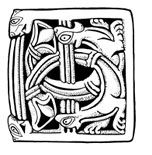
“In Him We Have Redemption Through His Blood”: How Does That Work?
COULD GOD HAVE REDEEMED MAN IN ANY OTHER WAY?
Regarding the fact that the blood of Christ is the price paid for our redemption there is no controversy. In addition to the one cited in the title of this article (Eph. 1:7), the New Testament is replete with verses testifying to this central fact of redemption history. For example, in Colossians 1:20 St. Paul writes that Christ “made peace through the blood of his cross, by him to reconcile all things unto himself,” and in Revelation 12:11 we read that the brethren “overcame him [the accuser] by the blood of the Lamb.” In fact, the blood of Christ is key to the New Covenant, which replaced the requirement of the Old Covenant for animal sacrifices. However, even in orthodox Catholic circles there is confusion about how Christ’s sacrifice on the cross bought about our redemption and whether this is the only way this could have been accomplished.
To explain the doctrine of the atonement, we must understand two basic facts. First is the nature of God Himself. In God is the perfection of all virtues, and two of those virtues are justice and mercy. Psalm 7:11 proclaims, “God judgeth the righteous, and God is angry with the wicked every day,” and Acts 17:31 records St. Paul as preaching, “He hath appointed a day in which he will judge the world in righteousness by that man whom he hath ordained.” This presents a logical problem: How are justice and mercy to be reconciled? In our justice system, this is accomplished through compromise. The law might call for a certain punishment for an infraction (demanding justice), but a court might sentence the offender to a lesser punishment (showing mercy). In fact, a parole board might later eliminate the remainder of the sentence entirely. God, however, does not compromise. In Him perfect justice and perfect mercy co-exist.
Second, Hebrews 9:22, an important but often neglected verse, proclaims, “Without shedding of blood there is no remission of sins.” These two facts — the nature of God and the remission of sins through blood — are crucial to understanding the doctrine of atonement.
Let’s begin at the beginning, with the sin of our first parents, the very reason our redemption was necessary. God created Adam and Eve in a state of perfect righteousness. Their destiny, as was the destiny of all generations that would follow them, was to live with Him in perfect peace, each beholding the other face to face. In fact, Scripture tells us man was created in God’s own image (cf. Gen. 1:27), so that each saw the other not as strangers but as friends. (It is worth noting that both male and female were created in God’s image.) However, Adam, representing mankind, destroyed that fellowship by his sin and cast the fate of mankind into a somewhat unpleasant and possibly uncertain future. Much ink has been spilled in speculation over the nature of Adam’s sin, but there is really no need for any quandary here. His sin was simply a matter of disobedience, the root of all sin.
You May Also Enjoy
A favorite ploy for nonbelievers is to play off an allegedly vengeful "God of the Old Testament" against a peace-loving "God of the New." But this will not stand.
Whereas the results of a DNA test of a famous person such as Jesus normally would be published in a major scientific journal, not so the results of this DNA test.
Peter was almost certainly looking over the shoulder of Mark during the writing of the second Gospel, and Jesus’ own mother had enormous influence on Luke.

